|
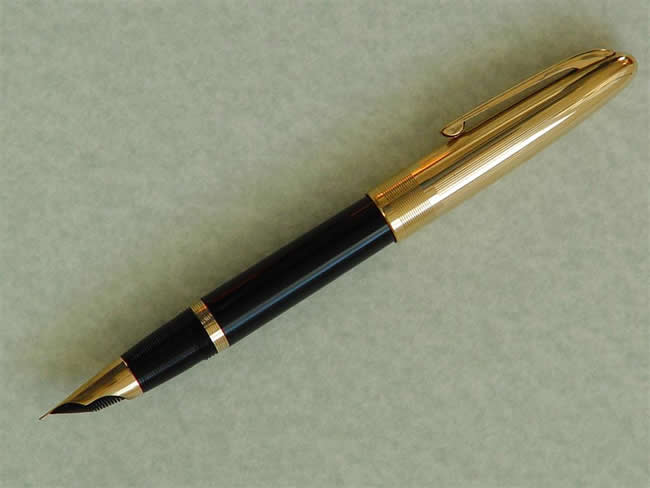
The Rossi brothers started manufacturing fountain pens in the 1930s in Sandrigo,
a small town near Vicenza, in the North East of Italy.
The emphasis on the past glory of Imperial Rome that was part and parcel of
fascist propaganda permeated much of italian industry in those years. The Rossi
pens were no exception, and the trade mark that was adopted by the two brothers
for their writing instruments was “Caesar” and included a roman imperial
eagle in their logo.
Other sub brands they produced also shared a latin connotation: names such
as Juventus and Julianus were used to identify lower cost pens often aimed at
the student market.
Our interest, however, is directed towards the pens that were manufactured
by the Rossi brothers after World War 2.
After the liberation of Italy, an influx of american pens offered italian
buyers new, reliable and “futuristic” models. The Parker 51 reigned
supreme and Aurora created the 88, a pen that matched (some say surpassed) the
Parker flagship pen in performance and styling. Another popular american manufacturer
was Sheaffer and the Rossi brothers decided that, just as Aurora had produced
an italian equivalent of the Parker 51, they would produce an italian equivalent
of the Sheaffer Balance 1000 of 1949.
The company, which had been registered as “F.R.V.” (Fratelli Rossi
– Vicenza) was renamed “Pen-Co Manufacturers” (adopting an American-looking
brand name that was far more desirable in post war Italy). They started manufacturing
some celluloid pens that adopted the bullet shape made famous by Sheaffer, and
at the same time started development of their new, ultra-modern flagship pen:
the Pen-Co 53.
The Pen-Co 53 was launched in 1952, with massive advertising that highlighted
the advanced technical features of the pen, including an air-pressure compensation
valve, an efficient ink-recovery system and an innovative filling mechanism, based
on the old “postal” system and sharing a few features also with the
Vacumatic filler still used on the Parker 51.
The attached cutaway drawing shows the button-activated rubber bulb and the
large breather-tube-equipped ink reservoir.
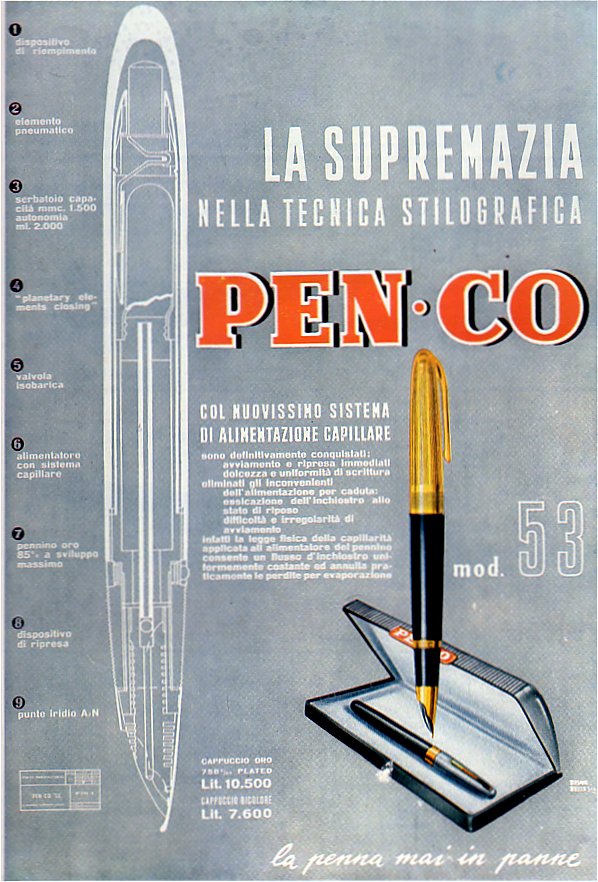
The Pen-Co 53 was slightly larger than the similarly-styled Sheaffer pen,
anticipating the trend towards larger pens that survives to this day.
The 53 was available with a gold plated cap, for the hefty sum of Lit. 10,500
(about 17 US dollars of the time) or with a chrome plated cap with gold-plated
trim, for Lit. 7,600 (approximately $12 US). The following year a smaller model
was also introduced (the Junior) which adopted a filling mechanism based on the
Sheaffer Touchdown.
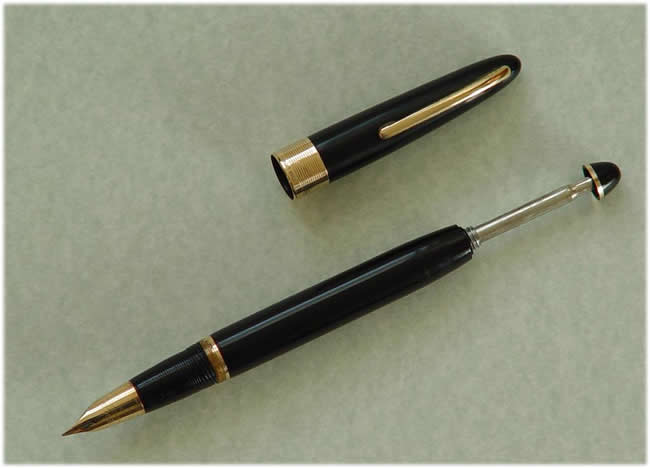
The bulb filling mechanism of the original Pen-Co53 required the unscrewing
of the barrel in order to access the button filling mechanism: this feature was
not appreciated by consumers, who preferred pens that could be refilled by using
a knob at the top of the barrel. Because of this, between 1953 and 1954, the Touchdown
filler was also adopted on the flagship pen, which was then re-named the Pen.Co
53B.
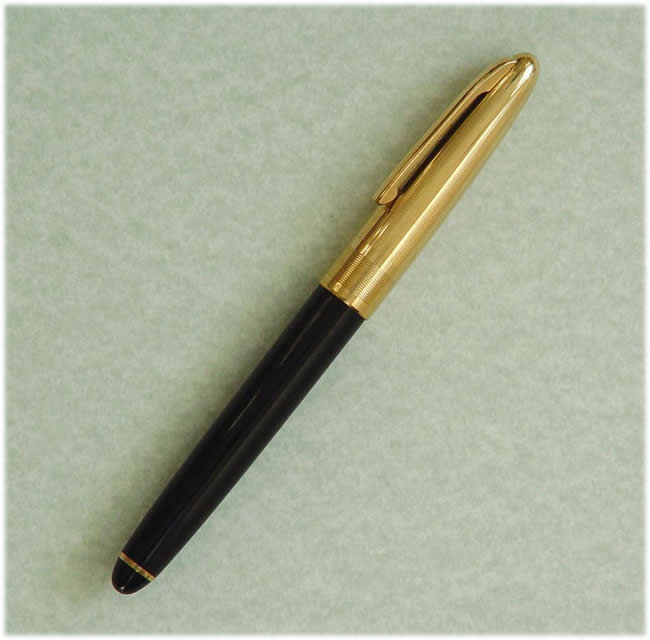
The similarity with the Sheaffer product was now even more marked: the nib
was almost identical (the Pen-Co nib was inscribed with the words: Penco Manufacturers),
the overall shape of the pen, the style of the cap and the filling system were
very close copies of the features found on the pens from Fort Madison.
It is interesting to note that the Pen-Co 53 was not a low-quality knock-off
pen: the pens were well made, had impeccable finish and were technically very
advanced. They remain valuable collectibles to this day.
The Sheaffer logo contained the words “Sheaffer’s Pen.Co.”
And this caused confusion with many italian customers, who assumed that the Pen-Co
pens came from the same manufacturer. In light of the increasing success of the
Pen-Co 53 and seeing the negative impact this caused to sales of the Sheaffer
products, the Sheaffer distributor for Italy sent a strong note to the Fort Madison
company and Sheaffer’s attorneys promptly advised Pen-Co of possible serious
legal proceedings.
The Rossi brothers reacted by changing, once again, the filling mechanism.
The last Pen-Co 53 pens adopted a conventional piston filling system.
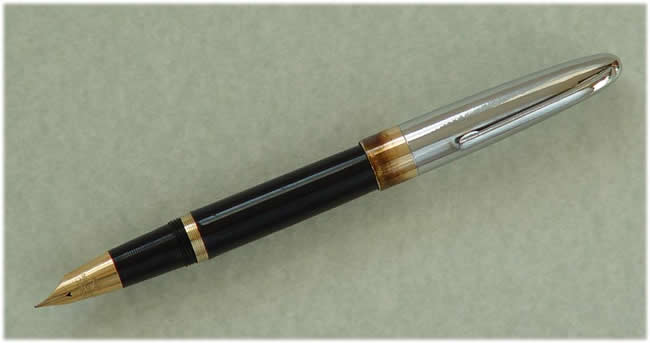
This was not deemed sufficient by the Sheaffer lawyers and finally Pen-Co,
facing mounting legal expenses and facing a probable loss in the court proceedings
discontinued production of their flagship pen.
The Rossi brothers tried a few more pen designs, including some forgettable
low cost and student models, but the company never recovered from the Sheaffer
lawsuit crisis.
To make things worse for Pen-Co, the arrival of the ballpoint pen quickly
shifted public attention away from fountain pens. After almost thirty years, the
Pen-Co company closed its doors at the end of the 1950s.
Let us now have a closer look at a few Pen-Co 53s.1. The first of the Pen-Co
53 pens that we have is the flagship “B” model from 1953.
This particular pen is new-old-stock and the finish is impeccable.
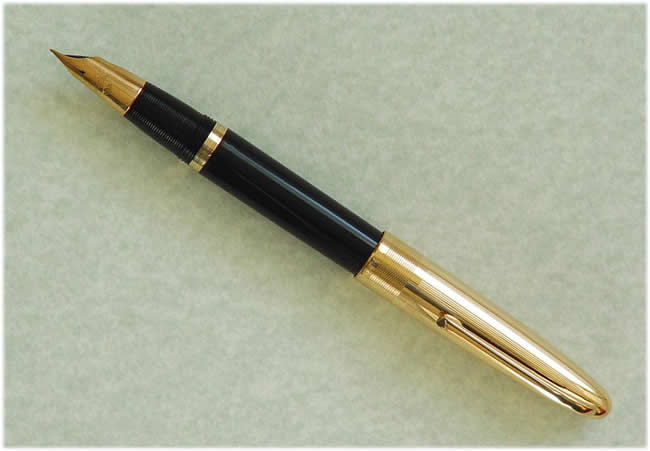
The tubular gold nib has very well shaped iridium tipping and the filler is
the Touchdown copy, which still operates smoothly.
The pen is shown in its original window display unit.
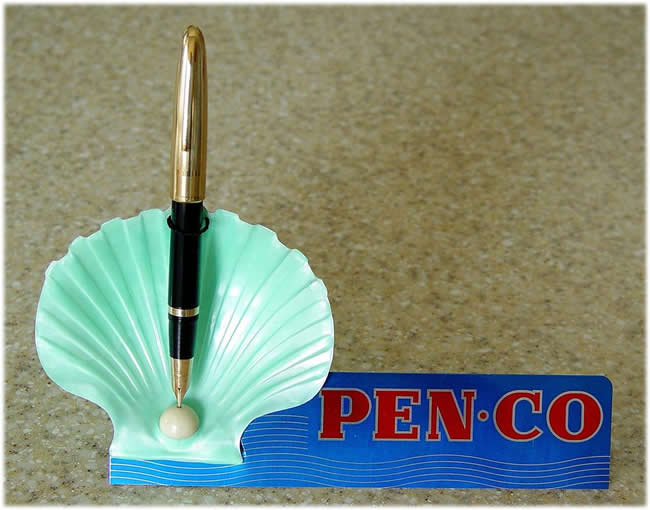
Details of the tubular nib show a well made and beautifully finished product.
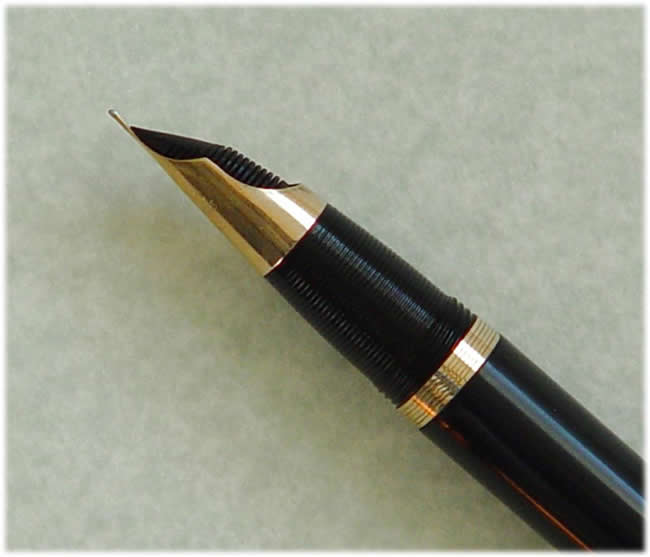
2. The second model is the smaller Junior of 1953. This is the less expensive
variant of the 53, which introduced the Touchdown filler mechanism that was later
adopted also on the flagship pen.
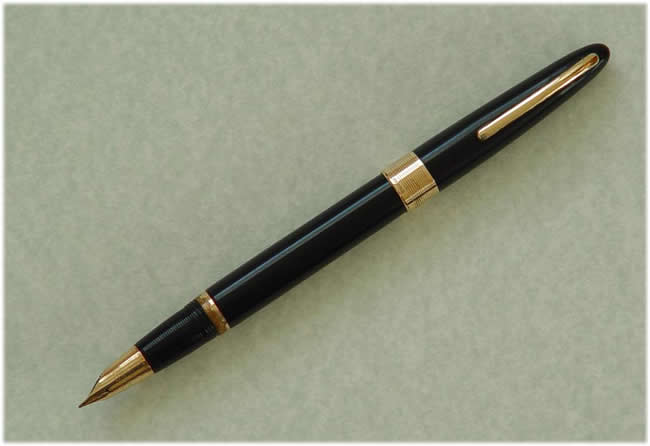
The picture shows the resemblance between the Pen-Co 53 Junior and a Sheaffer
pen of the same vintage.
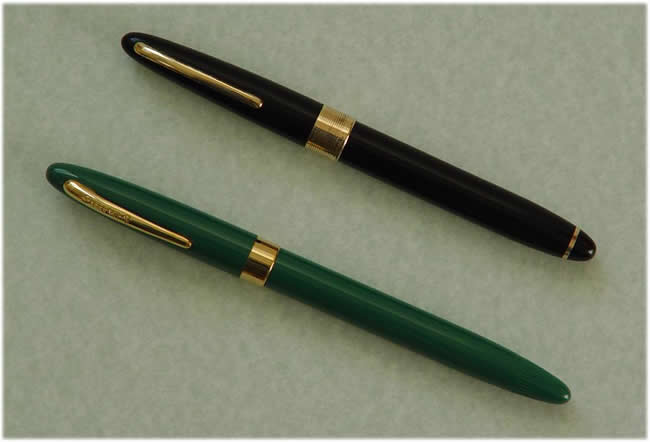
3. The third pen is a late Pen-Co 53 (circa 1956), with the piston filling
system that was adopted in place of the Touchdown after Sheaffer threatened legal
action.
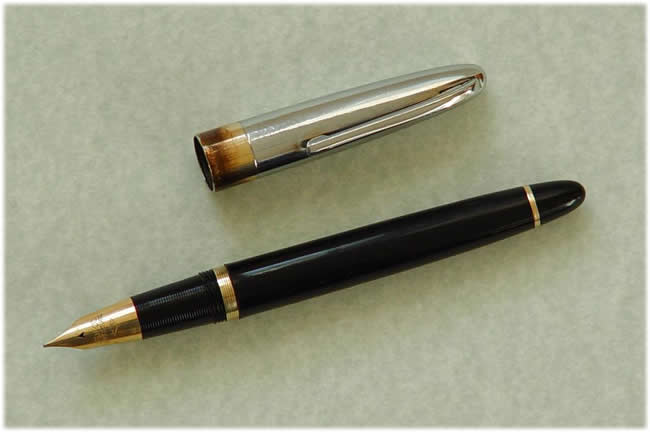
This pen represents the swan song of the Pen-Co company, the last quality
pen that was produced by the Rossi brothers.
4. The last photographs show three pens with tubular nibs: a Sheaffer (L),
a Pen-Co (M) and a Chinese Wing Sung (R)

and a close up view of the nibs.
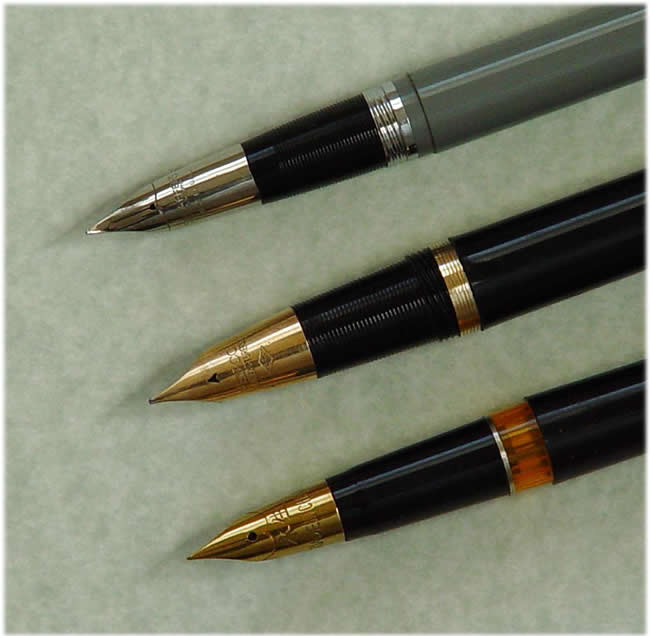
© 2004 Giovanni Abrate
|